Fastq to Annotated Somatic Variants with Coverage Analysis
The Fastq to Annotated Somatic Variants with Coverage Analysis template workflow:
- Identifies somatic variants and annotates these with exon number and amino acid changes.
- Produces a read mapping.
- Reports coverage at target and gene level.
- Optionally identifies copy number variants (CNVs).
The workflow can only be used with targeted data.
The runtime of this workflow is significantly longer than the runtime of Fast to Annotated Somatic Variants (Fastq to Annotated Somatic Variants), because a read mapping track is saved.
Fastq to Annotated Somatic Variants with Coverage Analysis can be found at:
Template Workflows | LightSpeed Workflows (![]() ) | Fastq to Annotated Somatic Variants with Coverage Analysis (
) | Fastq to Annotated Somatic Variants with Coverage Analysis (![]() )
)
If you are connected to a CLC Server via your Workbench, you will be asked where you would like to run the analysis. We recommend that you run the analysis on a CLC Server when possible.
In the first wizard step, select the target regions (figure 4.13).
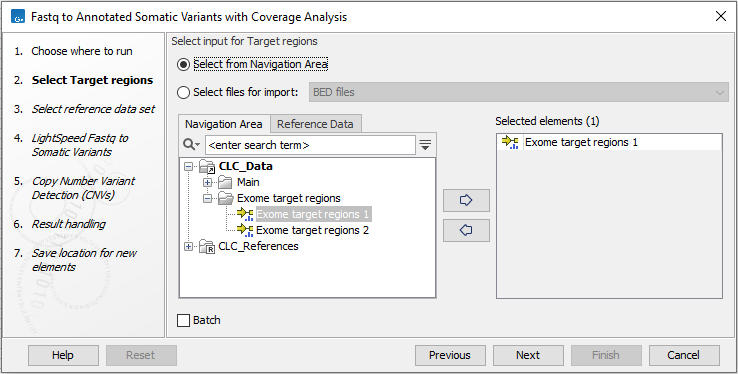
Figure 4.13: Select the target regions.
Next, select a Reference Data Set (figure 4.14). If you have not downloaded the Reference Data Set yet, the dialog will suggest the relevant data set and offer the opportunity to download it using the Download to Workbench button.
If none of the available reference data sets are appropriate, custom reference data sets can be created, see http://resources.qiagenbioinformatics.com/manuals/clcgenomicsworkbench/current/index.php?manual=Custom_Sets.html.
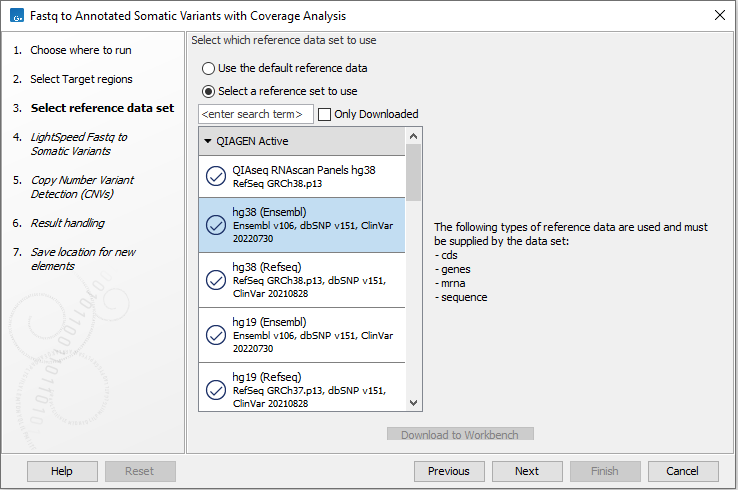
Figure 4.14: Select a reference data set.
In the LightSpeed Fastq to Somatic Variants wizard step (figure 4.15) you have the following options:
- Reads (fastq) Press Browse to select fastq files for analysis.
- Masking mode To enable reference masking when mapping reads, set this option and select a masking track.
- Masking track Provide a masking track for the chosen reference genome if reference masking has been enabled.
- Discard duplicate mapped reads Duplicate mapped reads are per default replaced with a consensus read. Untick if duplicate mapped reads should be retained. See Deduplication for additional details.
- Lenient inversion detection Enable lenient inversion detection to allow detection of inversions which only has read support in one direction on each of the breakpoints. This is recommended for targeted data. Enabling this option can increase processing time and can result in detection of more false positive inversions.
- Batch Select if fastq files from different samples are used as input, and each sample should be analyzed individually (for information about batching see Batching).
- Join lanes when batching Select to join fastq files from the same sample that were sequenced on different lanes.
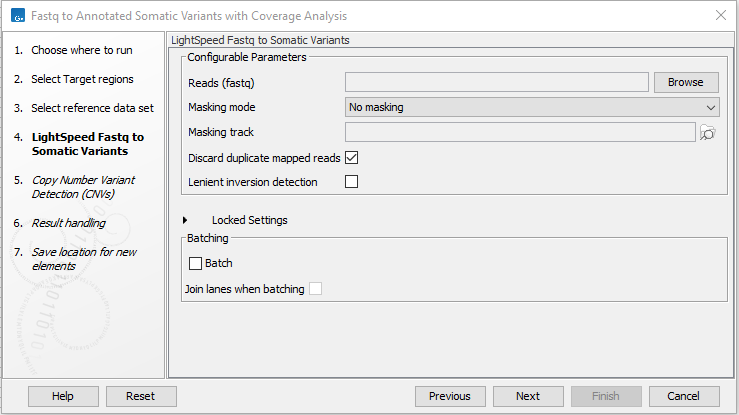
Figure 4.15: Select fastq files.
In the QC for Targeted Sequencing wizard step, define the threshold for minimum coverage (figure 4.16). This threshold is important because it is used in the quality control section of the sample report. In the later wizard step for Create Sample Report, you will be able to adjust the percent bases in the target regions that should meet this threshold.
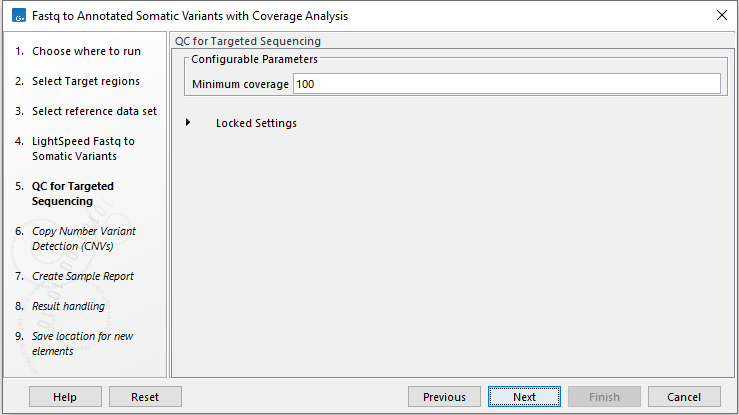
Figure 4.16: Set the coverage threshold. This threshold is used in the quality control section of the sample report.
In the wizard step Copy Number Variant Detection (CNVs), it is possible to specify control coverage tables or read mappings for copy number variant detection (figure 4.17). If controls are not provided, copy number variant detection will not be performed. Read about copy number variant detection here http://resources.qiagenbioinformatics.com/manuals/clcgenomicsworkbench/current/index.php?manual=Copy_Number_Variant_Detection.html.
Note that for CNV detection it is important that the same processing is applied to control samples and the sample that is tested for CNVs. We recommend using the LightSpeed template workflow Fastq to Somatic CNV Control tro create appropriate control coverage tables, see Fastq to CNV Control.
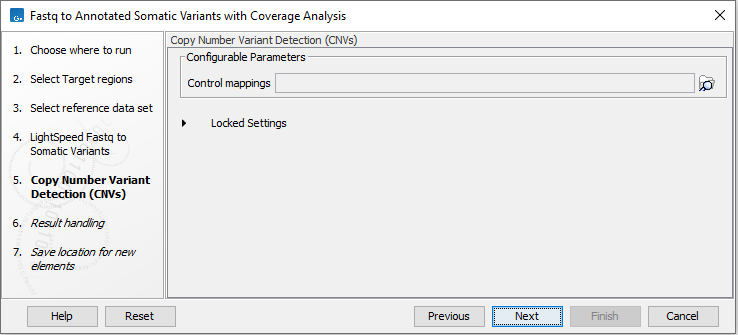
Figure 4.17: Select control coverage tables or read mappings for copy number variant detection.
In the Create Sample Report wizard step, select relevant summary items and specify thresholds for quality control (figure 4.18). Summary items, thresholds and an indication of whether specified thresholds were met, will be shown in the quality control section of the sample report. The default summary items are appropriate for many data sets, but may need to be adjusted.
For the summary item % of target region positions with coverage >= threshold, the threshold is the minimum coverage defined in the previous QC for Targeted Sequencing wizard step.
To add more summary items, press Add..., choose the report type LightSpeed fastq to somatic variants or QC for targeted sequencing and select summary items as appropriate.
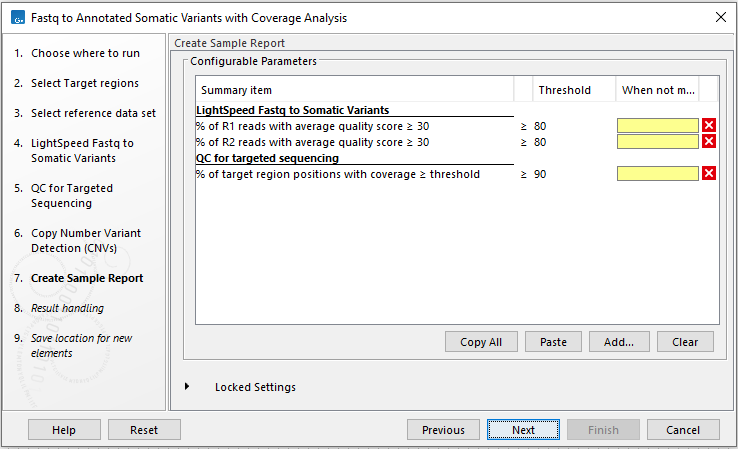
Figure 4.18: Specify summary items. These will be shown in the quality control section of the sample report.
In the final wizard step, choose to Save the results of the workflow and specify a location in the Navigation Area before clicking Finish.
Subsections
